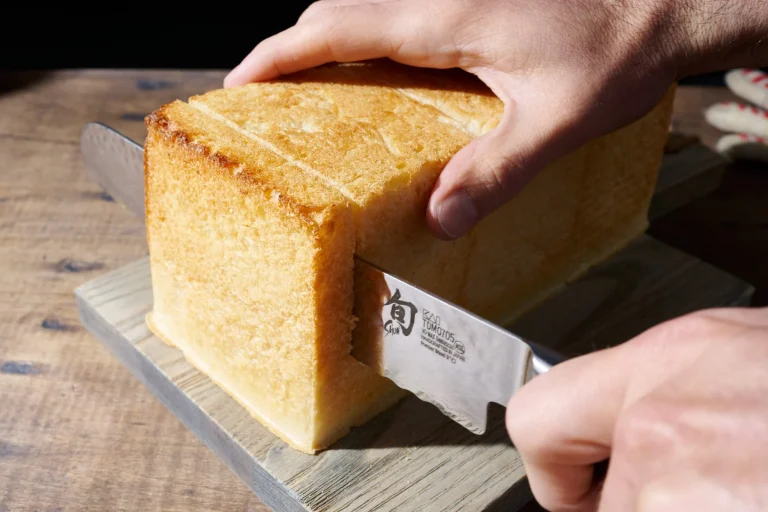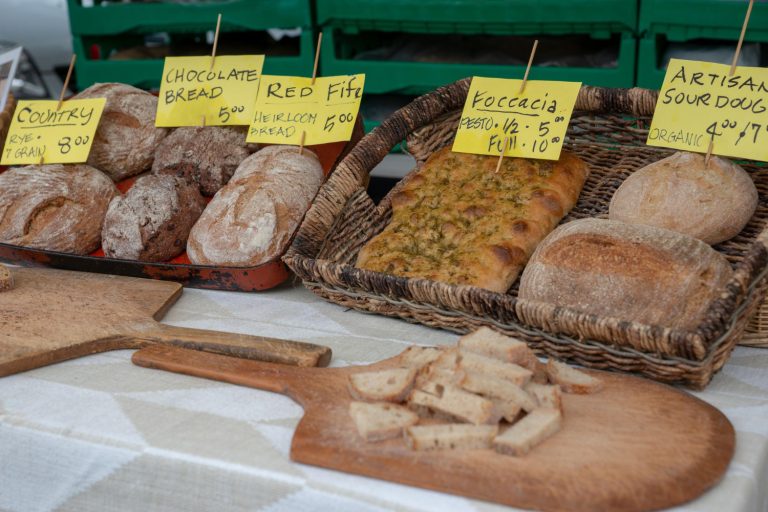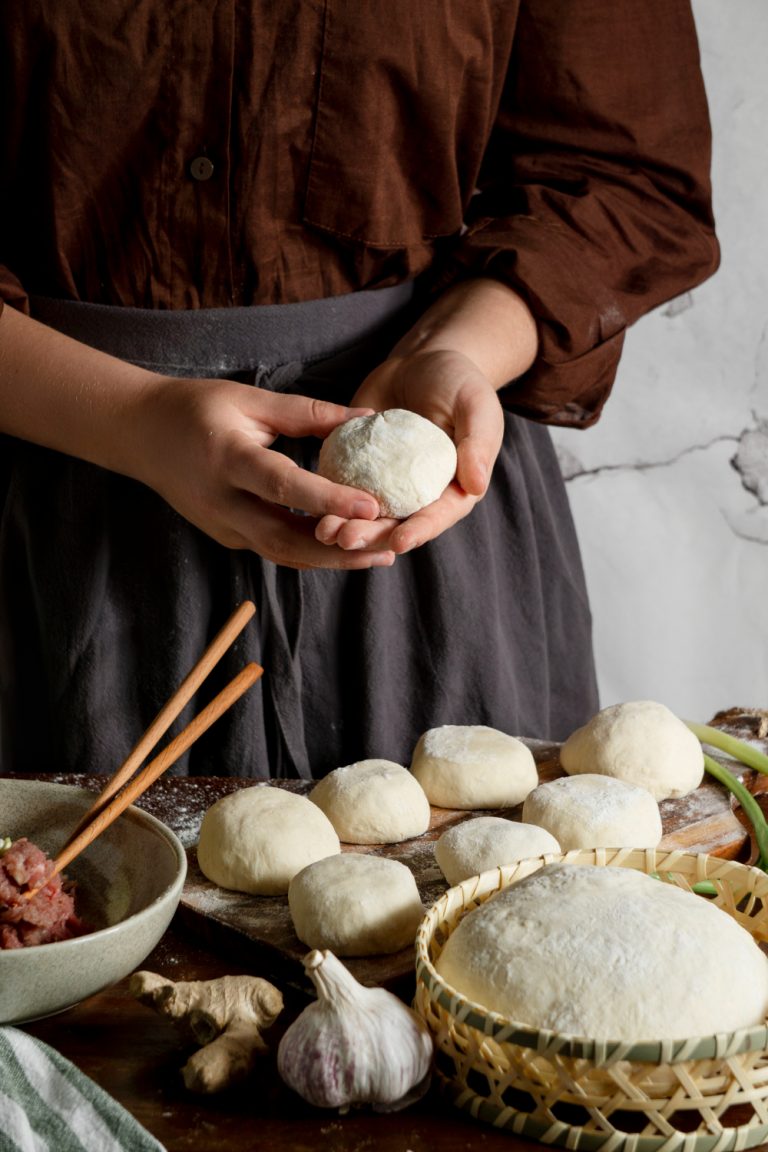What is a Sourdough Starter? The Complete Beginner’s Guide
Sourdough starter is a fascinating mixture of flour and water that captures wild yeast and beneficial bacteria from the environment. This natural lavender has been used for centuries to create delicious, tangy bread with a unique flavor profile and texture. Many bakers are drawn to sourdough for its health benefits, artisanal qualities, and the satisfaction of creating bread from scratch.
This guide will explore sourdough starter and how to make one at home. We’ll cover the basics of maintaining your starter, including feeding schedules and storage methods. You’ll also learn how to use your starter in various recipes, understand the difference between starter and discard, and discover what hooch is in the sourdough world. Whether you’re a beginner or looking to refine your sourdough skills, this comprehensive guide has you covered.
What is a Sourdough Starter?
Definition
A sourdough starter is a simple mixture of flour and water left to ferment at room temperature. This natural leavener captures wild yeast and beneficial bacteria from the surrounding environment, creating a living culture. As the mixture ferments, it develops a complex blend of microorganisms that give sourdough bread its distinctive tangy flavor and unique texture.
Unlike commercial yeast, which provides quick and consistent results, a sourdough starter offers a more nuanced and flavorful outcome. It’s similar to the difference between an heirloom tomato and a supermarket variety – what you sacrifice in consistency, you gain in taste and character.
Ingredients
The essential ingredients for a sourdough starter are surprisingly simple:
• Flour: Due to its higher nutrient content, whole grain flour is often used to kickstart fermentation. Rye flour is particularly effective for this purpose. However, all-purpose or bread flour can also be used for ongoing feedings.
• Water: Filtered or tap water at room temperature (around 68-70°F) is ideal. If tap water has a strong chlorine smell, it’s best to use bottled water.
The key to a successful starter is the flour-to-water ratio and the mixture’s consistency. It should be like a thick paste, similar to peanut butter. Using a kitchen scale to measure ingredients can help achieve the right consistency.
Purpose
The primary purpose of a sourdough starter is to act as a natural leavening agent, replacing commercial yeast in bread-making. When added to bread dough, the starter causes it to rise through the production of carbon dioxide bubbles. This process leavens the bread, imparts a distinctive sour flavor, and improves its texture.
Beyond its leavening capabilities, a sourdough starter has several other purposes:
• Flavor Enhancement: The fermentation process creates lactic and acetic acids, giving sourdough bread a tangy taste.
• Improved Digestibility: The long fermentation time allows the starter to break down gluten and phytic acid, making the bread easier for some people to digest.
• Nutritional Benefits: Sourdough bread with a starter often contains higher folate, antioxidants, and other nutrients than bread made with commercial yeast.
• Versatility: While primarily used for bread, a sourdough starter can also make other baked goods, such as pizza dough, pancakes, and cookies.
Understanding what a sourdough starter is and how it works is the first step in mastering the art of sourdough baking. With proper care and patience, this living culture can become a valuable tool in your culinary arsenal, allowing you to create delicious, artisanal bread in your kitchen.
How to Make a Sourdough Starter
Creating a sourdough starter is a simple process that requires patience and consistency. This natural lavender, made from flour and water, captures wild yeast from the environment to produce a living culture. Here’s a step-by-step guide to help beginners create their sourdough starter.
Day-by-Day Instructions
Day 1: Mix 100 grams of room-temperature water with 100 grams of flour in a clean glass jar. For best results, use a combination of 75 grams of all-purpose flour and 25 grams of whole wheat or rye flour. Stir until no dry flour remains, creating a thick paste. Cover the jar with a cloth or loose lid and let it rest in a warm spot (around 70-80°F) for 24 hours.
Day 2: Check for tiny bubbles on the surface. This indicates the beginning of fermentation. Even if you don’t see bubbles, proceed to the next step.
Days 3-7: Discard half of the mixture and add 60 grams each of flour and lukewarm water. Mix well, ensuring no dry flour remains. Cover and let it rest for another 24 hours. Repeat this process daily for the next five days.
By day 7, your starter should show signs of activity, such as doubling in size and having a sour, yeasty smell. If it’s not quite ready, feed it for a few more days.
Feeding Schedule
Once your starter is active, you must maintain a regular feeding schedule to keep it healthy. Feed your starter twice daily, about 12 hours apart, for room-temperature storage. If you bake less frequently, you can store your starter in the refrigerator and feed it once a week.
To feed your starter, discard all but 20 grams of the mixture. Add 70 grams of all-purpose flour, 30 grams of whole rye flour, and 100 grams of water. Mix well and let it ferment at room temperature.
Signs of Activity
A healthy, active sourdough starter will display several signs:
- Consistent doubling in size within 4-6 hours after feeding
- A pleasant, yeasty aroma (avoid using if it smells like acetone or anything unpleasant)
- Bubbles breaking on the surface when it peaks
- A domed shape on the surface at its peak
- A spongy, honeycomb-like texture when viewed from the side of the jar
Your starter is ready to use when it passes the float test: drop a small amount into a glass of water – if it floats, it’s ready for baking. Remember, patience is critical when creating a sourdough starter. It may take up to two weeks for your starter to become fully active and ready for use in your favorite sourdough recipes.
Maintaining Your Sourdough Starter
Maintaining a healthy sourdough starter is crucial for successful breadmaking. A well-maintained starter ensures consistent results and allows bakers to create delicious sourdough bread with a distinctive tangy flavor. Here are some key aspects to consider when maintaining your sourdough starter.
Feeding Routine
A regular feeding schedule is essential for keeping your sourdough starter healthy and active. The frequency of feedings depends on various factors, including ambient temperature and how often you plan to bake. Feeding your starter once or twice daily is recommended for room-temperature storage. Daily feedings are usually sufficient if you store your starter in the refrigerator.
When feeding your starter, remove a portion of it (usually half) and add equal parts flour and water by weight. This process, known as refreshing, helps maintain the proper balance of wild yeast and bacteria in your starter. Using a kitchen scale to measure ingredients ensures accuracy and consistency in your feeding routine.
Maintaining a smaller starter can help reduce waste for those who bake frequently. Some bakers keep as little as 20 grams of starter and feed it with 40 grams each of flour and water daily. This approach minimizes discard while still providing enough starter for regular baking.
Storage Options
The storage method you choose for your sourdough starter depends on your baking frequency and personal preference. There are two main options:
Room Temperature Storage: Keeping your starter at room temperature is ideal if you bake several times a week. This method requires daily feedings but ensures your starter is always ready. Store it in a glass jar with a loose-fitting lid to allow air circulation.
Refrigerator Storage: For less frequent bakers, refrigerating the starter is convenient. This slows down fermentation, reducing the need for daily feedings. When using this method, feed your starter and let it sit at room temperature for a few hours before refrigerating. Remember to bring it back to room temperature and feed it at least once before using it in your recipes.
Always use clean utensils and containers to prevent contamination regardless of the storage method.
Troubleshooting
Even with proper care, sourdough starters can sometimes encounter issues. Here are some common problems and solutions:
Slow Fermentation: If your starter is sluggish, try feeding it with rye or whole wheat flour, which contains more nutrients. Ensure your starter is warm, ideally between 70-80°F (21-27°C).
Hooch Formation: A layer of liquid (hooch) on top of your starter indicates it’s hungry. Simply stir the hooch or pour it off, then feed your starter as usual.
Mold Growth: If you notice mold, discard the starter and begin anew. Always use clean utensils and containers to prevent mold and ensure your starter is fed regularly.
Overly Sour Smell: An excessively sour odor might make your starter too acidic. Try increasing the frequency of feedings or discarding more of the starter before each feeding.
Remember, maintaining a sourdough starter is as much an art as a science. With patience and practice, you’ll develop a feel for your starter’s needs and be able to adjust your maintenance routine accordingly. This will help you create the best sourdough starter for your baking adventures.
Using Your Sourdough Starter
When It’s Ready to Use
A sourdough starter is ready to use when it consistently doubles in size within 4 to 8 hours after feeding. This indicates that the wild yeast and beneficial bacteria have established a strong presence. Other signs of readiness include a pleasant, slightly tangy aroma and a light, airy texture with visible bubbles on the surface and sides of the jar.
You can perform a float test to determine if your starter is ready for baking. Drop a small spoonful of the starter into a glass of water. It’s likely active enough to use in your recipes if it floats. However, remember that this test isn’t foolproof, and relying on multiple readiness indicators is best.
Recipes to Try
Once your sourdough starter is mature and active, you can use it in various delicious recipes. Here are some popular options to get you started:
Sourdough Bread is a classic use for your starter. It creates a flavorful, chewy loaf with a crispy crust.
Sourdough pancakes or waffles are a great way to use up excess starters, resulting in light and tangy breakfast treats.
Sourdough Pizza Crust: Create a flavorful base for your favorite toppings.
Sourdough Crackers: A crispy snack that’s perfect for using up discard.
Sourdough Cinnamon Rolls: A delightful twist on a breakfast favorite.
Remember, you can incorporate your sourdough starter into many non-traditional recipes, adding a unique flavor profile to your baked goods.
Baking Tips
To get the best results when baking with your sourdough starter, keep these tips in mind:
Use your starter at its peak: For most recipes, you’ll want to use your starter when it’s at its most active, usually 4 to 8 hours after feeding.
Adjust hydration levels: Sourdough starters can vary in consistency. If your starter is thinner or thicker than the recipe calls for, you may need to adjust the amount of flour or water in your recipe.
Be patient: Sourdough fermentation takes time. Don’t rush the process; this gives sourdough a distinctive flavor and texture.
Experiment with different flours: While many starters are maintained with all-purpose flour, you can experiment with whole wheat, rye, or other flours to create different flavor profiles.
Use a kitchen scale. Measuring ingredients by weight rather than volume will yield more consistent results in your sourdough baking.
Maintain consistent temperatures: Sourdough thrives in warm environments. Try keeping your dough at a steady temperature during fermentation for best results.
By following these tips and experimenting with different recipes, you’ll soon become proficient in using your sourdough starter to create delicious, homemade bread and other baked goods. Remember, every sourdough starter is unique, so don’t be afraid to adjust recipes and techniques to suit your specific starter and taste preferences.
Conclusion
Sourdough starters are a fascinating blend of science and art, offering bakers a way to create unique, flavorful breads with a rich history. Making and maintaining a starter may seem daunting initially, but it becomes an enjoyable and rewarding part of baking with patience and practice. As you experiment with different flours and recipes, you’ll better appreciate the complex flavors and textures that sourdough brings to your baked goods.
Whether you’re a novice baker or an experienced bread enthusiast, sourdough opens up a world of possibilities in your kitchen. To take your bread and pizza-making to the next level, consider trying an authentic artisanal sourdough starter from The Yeast We Can Do – email john@theyeastwecando.com to get your hands on their premium starter. Remember, every sourdough journey is unique, so don’t be afraid to trust your instincts and adapt your techniques as you go along. Happy baking!
FAQs
What is the purpose of a sourdough starter?
A sourdough starter consists of fermented flour and water and is a natural leavening agent. It harnesses naturally occurring yeasts and bacteria to help baked goods rise.
How do you prepare a sourdough starter for baking bread?
To prepare your sourdough starter for bread-making, feed it 4-12 hours before you start your dough to ensure it’s active and bubbly. Combine warm water, the active starter, salt, and flour in a large mixing bowl, using a kitchen scale for precise measurements. Mix the ingredients with a wooden spoon or by hand.
Should I feed my sourdough starter after using it?
Once your sourdough starter is alive and active, it only requires feeding when you plan to use it again. In between uses, keep the starter in the refrigerator with a fitted lid.
Is it necessary to discard some of the sourdough starter each time you feed it?
Discarding a portion of your sourdough starter with each feeding is advisable unless you continuously increase its quantity. This process involves discarding the spent flour and water that nourished your starter during its last fermentation cycle.
How is a sourdough starter reused repeatedly, such as those used for decades in bakeries?
Sourdough starters can be maintained and reused indefinitely by regularly feeding fresh flour and water. The ongoing process of feeding and discarding ensures the starter remains active and healthy, allowing it to be used repeatedly over many years.
Where can I find a sourdough starter, and what should I look for?
Sourdough starter isn’t typically found as a dry product like commercial yeast in grocery stores. It’s a live culture you might find in specialty stores or at home. It’s not a dry ingredient but a bubbly, active mixture of flour and water.






